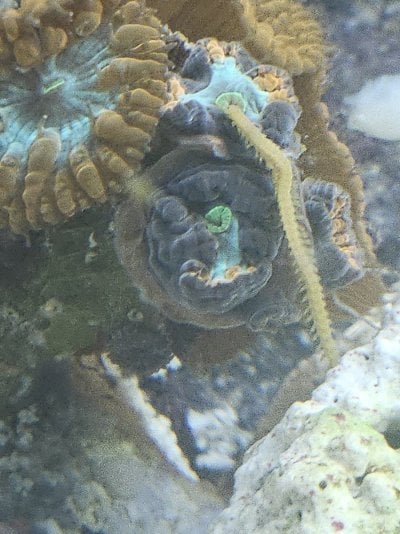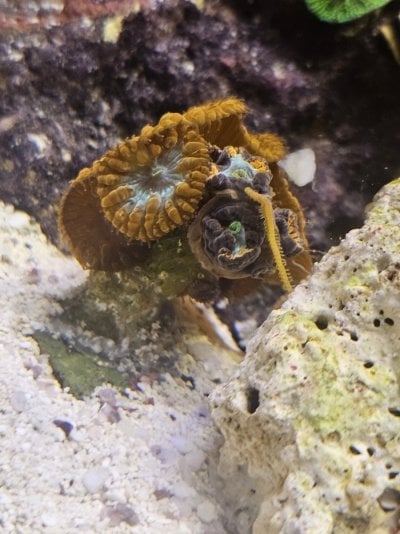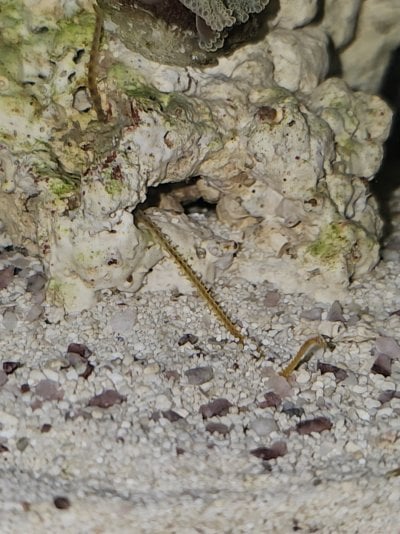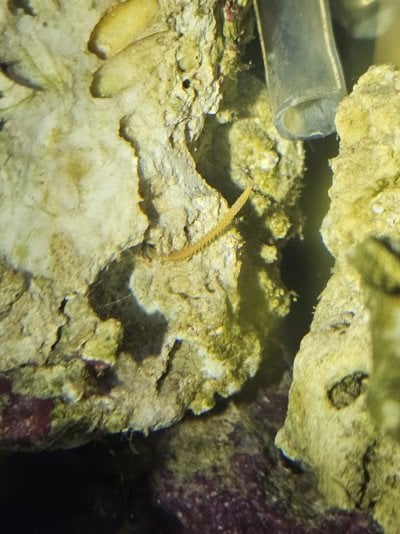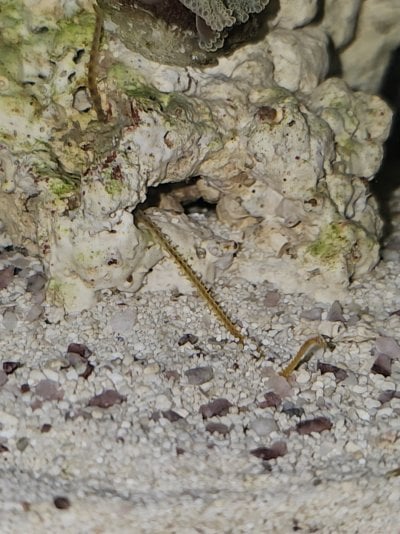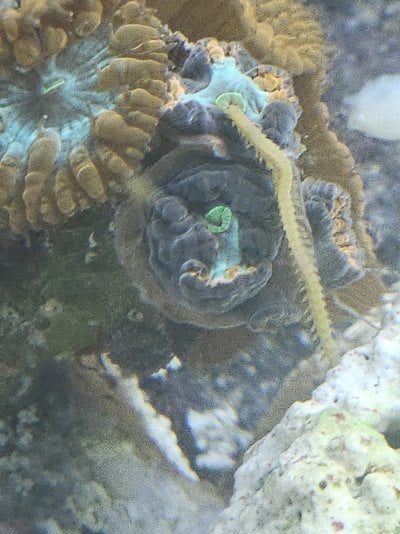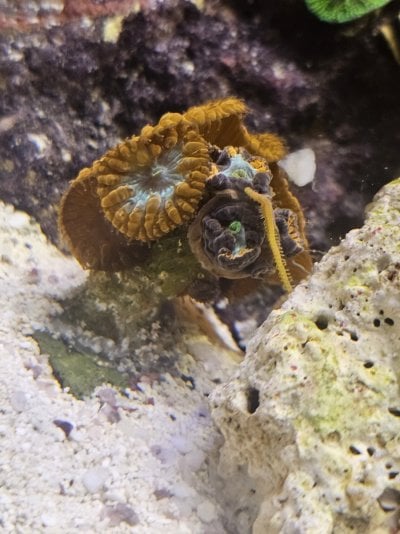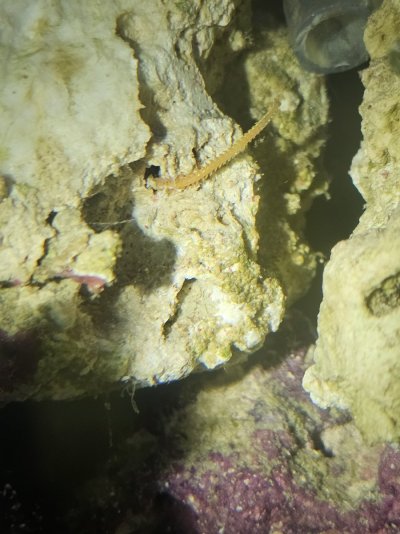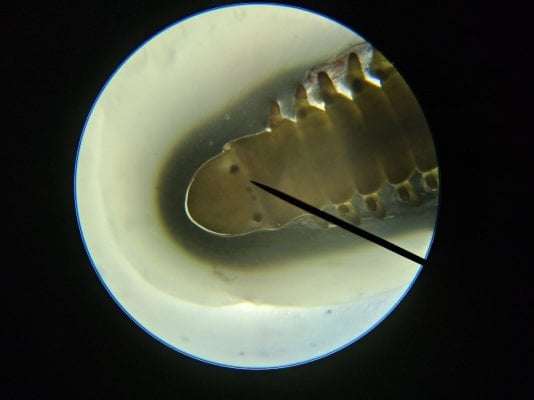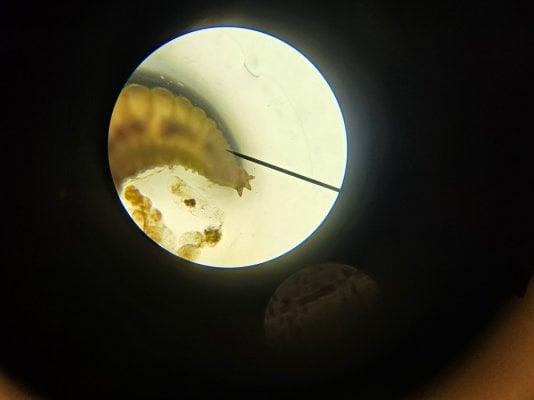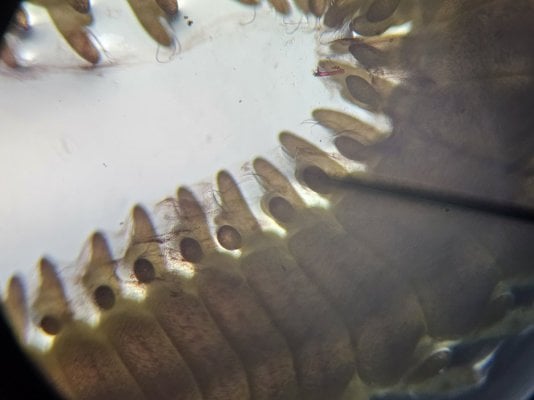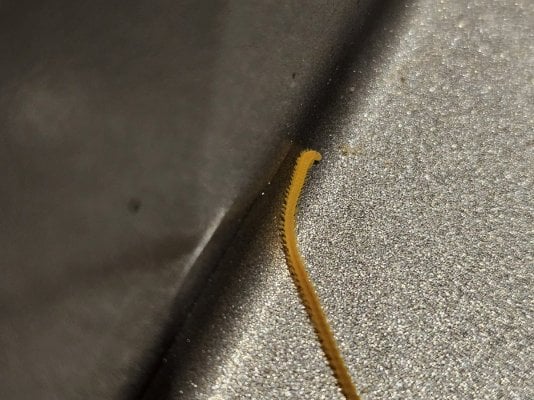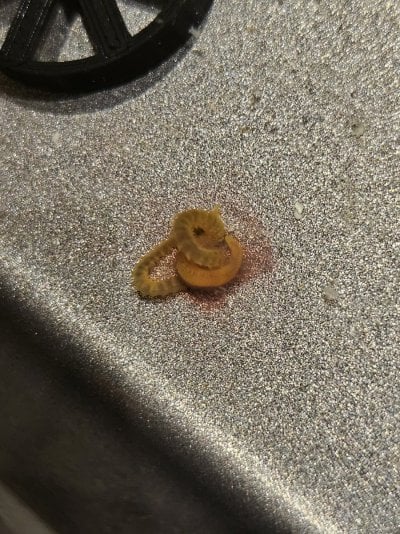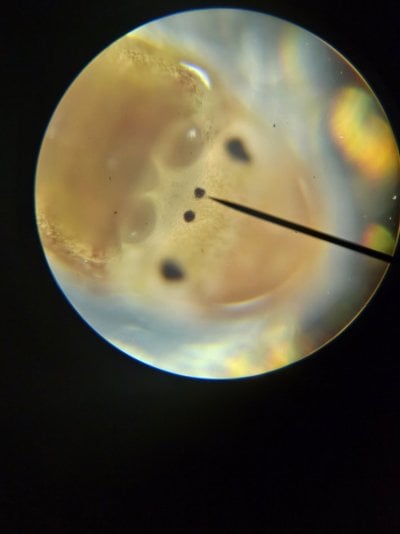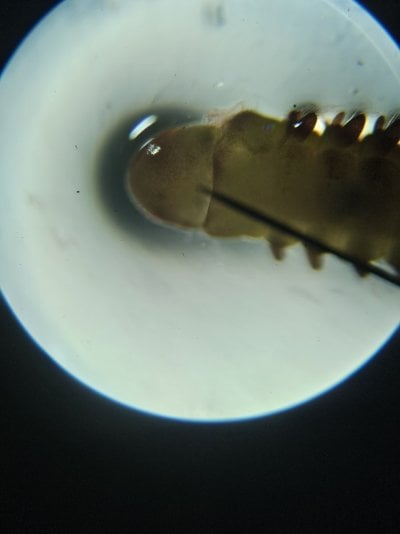Hey everyone thanks for checking in. I've had this tank running for around a month now and I started it with a mix of live rock from my lfs and the rock from my previous tank. I started noticing these worms a couple weeks after I added the rock. They are bright yellow with a slight green shimmer to them. They didnt bother me at first because I value bristles and others as part of a diverse clean up crew, bit this last week I have noticed some concerning behavior. You can see in one of the pics it is climbing into my blasto and irritating it. I have seen this worm reach for this blasto on multiple occasions. Last night I found a bigger one climbing into my rock flower unfazed. So far I have only had one snail death so no unusual amount after adding around 20 to the tank. I've seen at least two in the display and one in the sump, so it's safe to say the live rock I got is infested. These guys are really fast too, I've gotten them between my pitchers by moving slowly, but they retract into their hole faster than I can squeeze them shut. Do they look like Oenone fulgida to you? how much trouble am I in?
